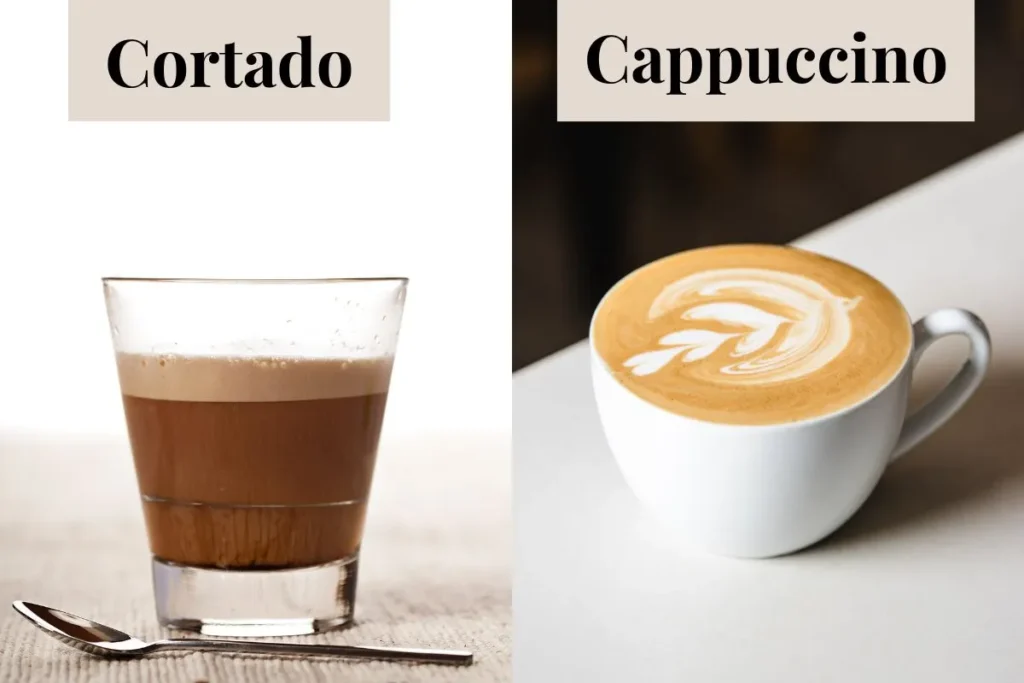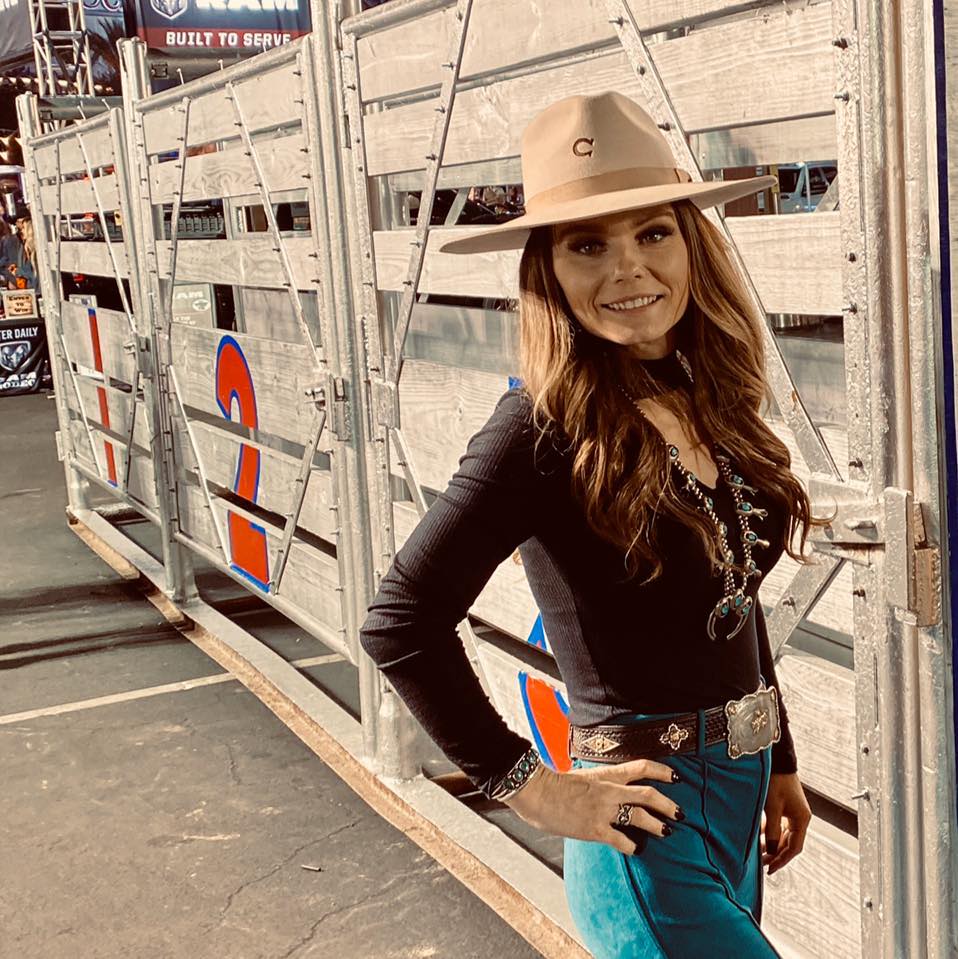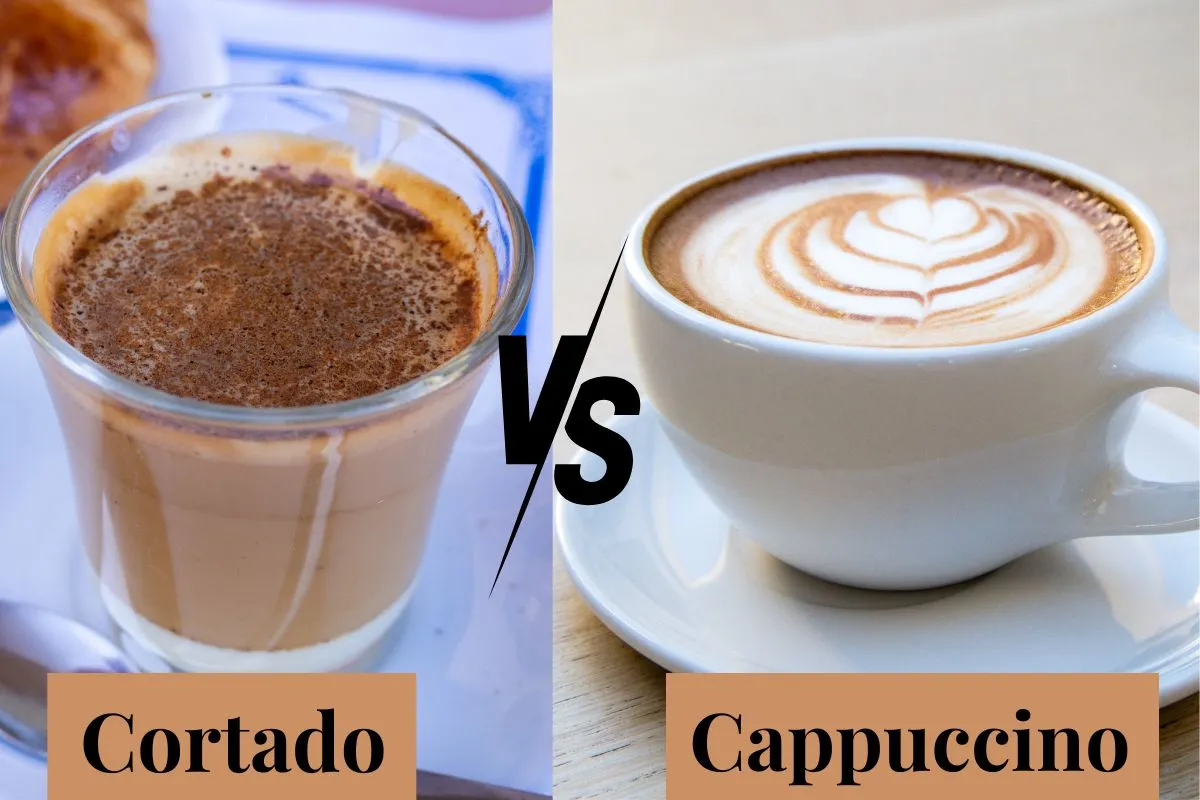If you’re a coffee enthusiast, you’ve likely encountered these two espresso-based drinks on cafe menus. While both are delicious in their own right, they differ in key ways, from their milk-to-espresso ratios to the overall taste and texture. In this article, we’ll break down the differences between cortados and cappuccinos, explore their origins, and offer guidance on how to choose the perfect one for you.
Cortado Vs Cappuccino
| Feature | Cortado | Cappuccino |
| Origins | Spain, “cortado” means “cut” in Spanish | Italy, named after Capuchin monks’ hooded robes |
| History | Gained popularity across Spanish-speaking countries | Staple in Italian cafés, beloved worldwide |
| Composition | Equal parts espresso and steamed milk (1:1 or 1:2 ratio) | Equal parts espresso, steamed milk, and milk foam (1:1:1 ratio) |
| Preparation | Espresso shot topped with steamed milk, minimal foam | Espresso shot, steamed milk, and thick layer of milk foam |
| Serving Size | 4-6 oz (120-180 ml) | 6-8 oz (180-240 ml) |
| Flavor Profile | Bold espresso flavor, smooth and creamy texture | Balanced espresso, milk, and foam; harmonious flavor |
| Mouthfeel | Silky and creamy, consistent texture | Velvety steamed milk, luxurious foam, interplay of textures |
| Presentation | Small glass, limited room for latte art | Larger cup, canvas for intricate latte art |
| Milk Type | Whole, skim, or non-dairy; impacts calorie and fat content | Whole, skim, or non-dairy; impacts calorie and fat content |
| Sweeteners & Toppings | Can increase calorie, carbohydrate, and fat content | Can increase calorie, carbohydrate, and fat content |
| Caffeine Content | Higher, due to greater proportion of espresso; around 120-150 mg | Slightly lower, espresso diluted by equal parts milk and foam; around 60-75 mg |
| Calories (per serving) | 50-70 kcal | 80-120 kcal |
| Fat (per serving) | 2-3 g | 4-6 g |
| Carbohydrates (per serving) | 4-6 g | 8-12 g |
| Protein (per serving) | 2-3 g | 4-6 g |
| Consumption Style | Often enjoyed quickly due to small size | Sipped more leisurely |
| Pairing Suggestions | Croissants, scones, danish pastries, breakfast sandwiches | Biscotti, chocolate croissants, muffins, quiches, frittatas |
Origins and History
When it comes to the origins and history of the cortado and cappuccino, these two popular espresso-based drinks have distinct roots in European coffee culture. The cortado, which translates to “cut” in Spanish, hails from Spain and has gained popularity across Spanish-speaking countries.
This beverage is crafted by combining equal parts of espresso and steamed milk, resulting in a drink that beautifully balances the bold flavors of coffee with the smoothness of milk.
On the other hand, the cappuccino has its origins firmly planted in Italy, where it has become a staple in Italian cafés and a beloved choice among coffee enthusiasts worldwide.
The drink’s name is believed to have been inspired by the Capuchin monks, whose hooded robes resemble the color of a perfectly prepared cappuccino. This classic beverage is created by layering equal parts of espresso, steamed milk, and frothy milk foam, resulting in a harmonious blend of flavors and textures.
Both the cortado and cappuccino have rich histories that have contributed to their enduring popularity. The cortado’s simplicity and balance have made it a favorite among those who appreciate a strong coffee flavor without the overpowering bitterness.
Meanwhile, the cappuccino’s combination of espresso, steamed milk, and velvety foam has elevated it to an art form, with skilled baristas creating stunning latte art designs atop the drink’s surface.
As these beverages have spread beyond their countries of origin, they have become integral parts of coffee shop menus around the globe. The cortado and cappuccino have each played significant roles in shaping the world’s coffee culture, offering coffee lovers two distinct and delightful ways to enjoy the perfect marriage of espresso and milk.
Composition and Preparation
When comparing the composition and preparation of cortados and cappuccinos, it’s essential to understand the key differences that set these two drinks apart. A cortado is made by combining equal parts of espresso and steamed milk, typically in a ratio of 1:1 or 1:2.
The milk is steamed to a smooth, velvety texture, with minimal foam, creating a drink that showcases the rich, bold flavors of the espresso while being tempered by the creamy milk.
To prepare a cortado, a skilled barista will pull a shot of espresso and then carefully steam the milk, ensuring that it reaches the perfect temperature and consistency. The steamed milk is then poured over the espresso, resulting in a drink that is slightly smaller than a cappuccino, usually served in a 4-6 ounce glass.
In contrast, a cappuccino is composed of equal parts espresso, steamed milk, and milk foam, following a 1:1:1 ratio. The key to a well-crafted cappuccino lies in the preparation of the milk foam, which should be thick, creamy, and velvety. Baristas take great care in frothing the milk to create the perfect foam consistency, as this is what sets the cappuccino apart from other espresso-based drinks.
To make a cappuccino, the barista starts by pulling a shot of espresso, then steams the milk to create both the liquid steamed milk and the thick foam. The steamed milk is poured over the espresso, and the foam is spooned on top, creating a distinct layered appearance. Cappuccinos are typically served in 6-8 ounce cups, allowing room for the espresso, steamed milk, and the generous layer of foam.
The composition and preparation of cortados and cappuccinos highlight the skill and attention to detail that goes into creating these beloved beverages. While both drinks start with a base of expertly pulled espresso, the way in which the milk is steamed and incorporated into the drink makes all the difference in terms of taste, texture, and overall experience.
Flavor Profile and Mouthfeel
When it comes to the flavor profile and mouthfeel of Cortado Vs cappuccino, each drink offers a unique experience for coffee lovers. The cortado, with its equal parts espresso and steamed milk, boasts a bold, robust flavor that highlights the rich, complex notes of the espresso. The steamed milk helps to mellow out the espresso’s intensity, creating a smooth, well-balanced taste that isn’t overpowered by the milk.
The mouthfeel of a cortado is characterized by its creamy, silky texture, which comes from the perfectly steamed milk. The minimal amount of foam allows the drink to maintain a consistent, velvety feel from start to finish, making it a pleasure to sip and savor.
On the other hand, the cappuccino’s flavor profile is defined by the harmonious interplay of espresso, steamed milk, and milk foam. The equal proportions of these elements create a more balanced flavor, with the espresso’s boldness tempered by the sweetness of the steamed milk and the light, airy foam. The result is a drink that showcases the best of each component, with no single element overpowering the others.
The cappuccino’s mouthfeel is distinctly different from that of the cortado, thanks to the presence of the thick, velvety milk foam. This foam adds a luxurious, almost whipped-cream-like texture to the drink, which complements the smoothness of the steamed milk and the richness of the espresso. As you sip a cappuccino, you’ll experience a delightful interplay of textures, from the creamy steamed milk to the light, airy foam.
Ultimately, the choice between a cortado and a cappuccino comes down to personal preference and the desired flavor profile and mouthfeel. Those who prefer a bolder, more espresso-forward drink may gravitate towards the cortado, while those who enjoy a more balanced, textured experience may opt for the cappuccino.
Regardless of your choice, both drinks showcase the skill and artistry of the barista and the quality of the ingredients used, making them beloved staples in the world of specialty coffee.
Serving Size and Presentation
When it comes to serving size and presentation, cortados and cappuccinos have distinct differences that contribute to their unique identities. A cortado is typically served in a small, 4-5 ounce glass or cup, reflecting its concentrated, espresso-forward nature. The serving size allows for a quick, satisfying coffee experience that can be enjoyed in just a few sips.
Due to the cortado’s small size and minimal foam, there is limited room for intricate latte art. However, skilled baristas may still create simple designs or patterns on the surface of the drink, adding a touch of visual appeal to the otherwise straightforward presentation.
In contrast, cappuccinos are generally served in larger, 6-8 ounce cups, allowing for a more substantial drinking experience. The increased volume accommodates the equal parts of espresso, steamed milk, and milk foam, creating a visually striking layered effect.
The presentation of a cappuccino offers baristas a canvas to showcase their latte art skills. The thick, velvety milk foam provides an ideal surface for creating intricate designs, patterns, and even portraits. Many coffee shops take pride in their baristas’ ability to craft stunning latte art, which has become an integral part of the cappuccino experience.
The difference in serving sizes between cortados and cappuccinos also influences how they are consumed. A cortado’s small size encourages a quick, focused coffee break, perfect for those on the go or looking for a midday pick-me-up. Cappuccinos, on the other hand, are often enjoyed more leisurely, sipped slowly to savor the flavors and textures of the drink.
The serving size and presentation of cortados and cappuccinos showcase the versatility and adaptability of espresso-based drinks. Whether you prefer a quick, concentrated coffee experience or a more indulgent, visually appealing treat, these two beverages offer something for every coffee lover’s taste and style.
Caffeine Content Comparison
When comparing the caffeine content of cortados and cappuccinos, it’s essential to understand the factors that influence the amount of caffeine in each drink. The primary determinant of caffeine content is the amount of espresso used in the preparation of the beverage.
In a cortado, the typical ratio of espresso to steamed milk is 1:1 or 1:2, meaning that the drink contains a higher proportion of espresso compared to a cappuccino. As a result, a cortado generally has a higher caffeine content, as the milk does not significantly dilute the espresso’s potency.
On the other hand, a cappuccino is made with equal parts espresso, steamed milk, and milk foam, following a 1:1:1 ratio. This means that the espresso is more diluted by the milk, resulting in a slightly lower caffeine content compared to a cortado.
However, it’s important to note that the actual caffeine content can vary depending on several factors, such as the type of coffee beans used, the roast level, the grind size, and the extraction time. Additionally, the size of the espresso shot can also impact the caffeine levels, with some coffee shops offering single or double shots as a standard.
To put this into perspective, a single shot of espresso typically contains around 60-75 milligrams of caffeine. A cortado made with a double shot of espresso would therefore have approximately 120-150 milligrams of caffeine, while a cappuccino made with a single shot would have around 60-75 milligrams of caffeine.
It’s worth noting that while the caffeine content may differ between cortados and cappuccinos, both drinks still provide a significant amount of caffeine and can be enjoyed for their energizing effects. Ultimately, the choice between the two often comes down to personal taste preferences and the desired balance of espresso and milk flavors.
Nutritional Composition

| Nutrient | Cortado (per serving) | Cappuccino (per serving) |
| Calories | 50-70 kcal | 80-120 kcal |
| Total Fat | 2-3 g | 4-6 g |
| Saturated Fat | 1-2 g | 2-3 g |
| Cholesterol | 8-10 mg | 15-20 mg |
| Sodium | 30-50 mg | 50-80 mg |
| Total Carbohydrates | 4-6 g | 8-12 g |
| Dietary Fiber | 0-1 g | 0-1 g |
| Sugars | 2-4 g | 6-8 g |
| Protein | 2-3 g | 4-6 g |
| Calcium | 10-15% DV | 15-20% DV |
| Caffeine | 80-100 mg | 60-80 mg |
When considering the nutritional composition of cortados and cappuccinos, it’s important to take into account the ingredients used in each drink, particularly the type and amount of milk. Both beverages contain espresso as a base, which has negligible calories and nutrients on its own. The primary difference in nutritional content stems from the steamed milk and milk foam used in each drink.
A cortado, with its 1:1 or 1:2 ratio of espresso to steamed milk, generally contains less milk than a cappuccino. As a result, a cortado typically has fewer calories, fat, and carbohydrates compared to a cappuccino of the same size. The exact nutritional values will depend on the type of milk used (whole, skim, or non-dairy alternatives) and the size of the serving.
For example, a 4-ounce cortado made with whole milk may contain approximately 50-60 calories, 3-4 grams of fat, 2-3 grams of carbohydrates, and 2-3 grams of protein. If made with skim milk or a non-dairy alternative, the calorie and fat content would be lower, while the protein content may vary depending on the milk used.
On the other hand, a cappuccino, with its equal parts espresso, steamed milk, and milk foam, contains a higher proportion of milk and, consequently, more calories, fat, and carbohydrates. A 6-ounce cappuccino made with whole milk can have around 90-120 calories, 5-7 grams of fat, 5-7 grams of carbohydrates, and 4-6 grams of protein. As with the cortado, using skim milk or a non-dairy alternative would result in lower calorie and fat content.
It’s worth noting that adding sweeteners, flavored syrups, or toppings like chocolate shavings or cinnamon to either drink will increase the calorie, carbohydrate, and potentially fat content. Those watching their calorie or fat intake may opt for skim milk or non-dairy alternatives and avoid additional sweeteners or toppings.
Ultimately, while the nutritional differences between cortados and cappuccinos may not be drastic, they are worth considering for those who are mindful of their dietary intake. The choice between the two drinks can be influenced by personal taste preferences, dietary restrictions, or specific nutritional goals.
Pairing Suggestions
When it comes to pairing cortados and cappuccinos with food, each drink offers unique opportunities to complement and enhance the flavors of various dishes. The key to successful pairing lies in considering the intensity of the coffee, the texture of the milk, and the overall balance of flavors.
Given the cortado’s bold espresso flavor and creamy texture, it pairs well with a range of breakfast foods and light snacks. The drink’s concentrated coffee taste can cut through the richness of buttery pastries, making it an excellent companion to croissants, scones, or danish pastries. The cortado’s smooth milk texture also complements the subtle sweetness of these baked goods.
For a savory pairing, the cortado’s robust flavor can stand up to the heartiness of breakfast sandwiches, such as those filled with bacon, egg, and cheese. The drink’s creamy mouthfeel can help to balance out the saltiness and richness of these savory dishes.
The cappuccino’s balanced flavor profile and velvety milk foam make it a versatile pairing option for a wide array of sweets and light fare. One classic pairing is the cappuccino with biscotti, the crunchy Italian almond biscuits. The cappuccino’s foam and the biscotti’s crisp texture create a delightful contrast, while the almond flavor complements the drink’s smooth milk and bold espresso notes.
Other sweet pairings that work well with cappuccinos include chocolate croissants, muffins, and even tiramisu. The drink’s combination of espresso and milk can help to balance out the sweetness of these desserts, while the foam adds a light, airy texture to the pairing.
For those who prefer savory options, the cappuccino’s balanced flavor can pair nicely with quiches, frittatas, or even avocado toast. The drink’s creamy texture can help to offset the richness of these dishes, while the espresso’s bold notes can provide a pleasant contrast to the savory flavors.
Ultimately, the key to successful pairings with cortados and cappuccinos is to experiment and find combinations that suit your taste preferences. Whether you’re in the mood for something sweet, savory, or a little bit of both, these versatile espresso-based drinks offer a range of possibilities for delightful and satisfying food and beverage pairings.
Conclusion
Whether you’re drawn to the bold intensity of a cortado or the frothy indulgence of a cappuccino, both drinks offer a unique and delicious espresso experience. Cortado Vs cappuccino The choice ultimately comes down to personal preference and the mood of the moment. If you’re seeking a pure, unadulterated coffee flavor, the cortado is your go-to. But if you crave a creamy, comforting treat with a touch of sweetness, the cappuccino will surely satisfy. Whichever you choose, you’re in for a delightful coffee adventure.
Frequently Asked Questions
Q1. What is the main difference between a cortado and a cappuccino?
The main difference between a cortado and a cappuccino lies in the ratio of espresso to milk and the texture of the milk. A cortado has equal parts espresso and steamed milk, while a cappuccino has equal parts espresso, steamed milk, and milk foam.
Q2. Which drink has more calories, a cortado or a cappuccino?
Generally, a cappuccino has more calories than a cortado due to its higher milk content. However, the exact calorie count will depend on the type of milk used and the serving size.
Q3. Can I make a cortado or cappuccino with non-dairy milk?
Yes, both cortados and cappuccinos can be made with non-dairy milk alternatives such as almond, soy, or oat milk. Keep in mind that the texture and flavor of the drink may vary depending on the type of milk used.
Q4. Is a cortado stronger than a cappuccino in terms of caffeine content?
Yes, a cortado typically has a higher caffeine content than a cappuccino because it contains a higher proportion of espresso to milk.
Q5. What is the ideal serving size for a cortado and a cappuccino?
A cortado is usually served in a 4-5 ounce glass, while a cappuccino is typically served in a 6-8 ounce cup.

Rossi Glover, the passionate Owner of Grand Lake Coffee, infuses every cup with her love for coffee and dedication to quality. With an extensive background in the art and science of coffee, Rossi is not just a connoisseur but a storyteller, sharing the intricate tales behind each brew.

